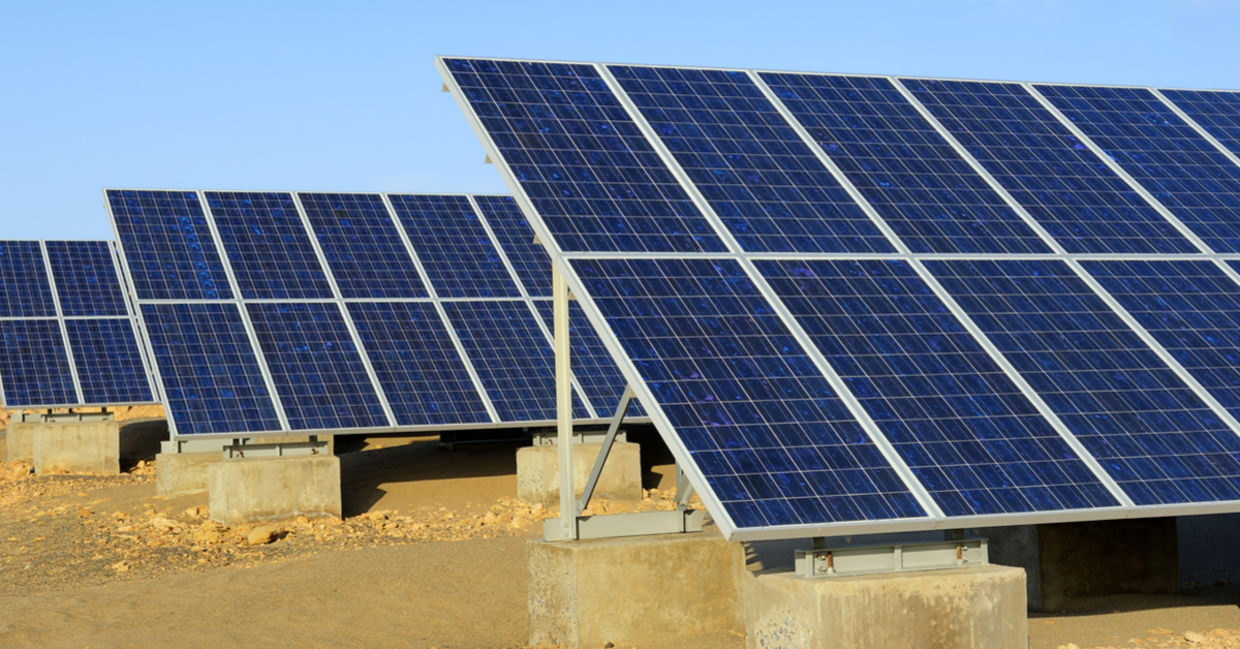
(asharkyu / Shutterstock.com)
An array of 120,000 photovoltaic solar panels were fired up near Monument Valley in Northeastern Arizona in May 2017. The Kayenta Solar facility became the first utility-scale solar project for the Navajo Nation. Kayenta powered around 18,000 Navajo reservation homes.
The solar plant is owned by the Navajo Tribal Utility Authority (NTUA ), and it is already expanding to power an additional 18,000 homes.
This was the first clean energy advancement on a reservation that was dependent on fossil fuels to generate electricity. "Before the solar plant, the green economy didn't exist on the Navajo Nation," Walter Haase, general manager of NTUA, told The Arizona Daily Sun.
The first phase of the Kayenta Solar project provided only one percent of the capacity of the Navajo generating station, but it proved that projects of this scale were possible. There were many previously promised projects that never panned out.
There were additional benefits to switching to renewable energy. The first phase brought an estimated $15.6 million in economic activity to the surrounding communities and jobs where chronic unemployment is ramped.
At the height of construction, close to 278 people of whom 236 (85%) were of Navajo descent, worked on the project and the NTUA expects that Kayenta II will employ an even greater number of Navajo.
The NTUA had worked out a financing model that included creating a for-profit taxable entity to take advantage of federal solar investor tax credits and working out a two-year power purchase and renewable energy credit agreement with Salt River Project that covers the loan repayments for the plant’s construction, Glenn Steiger, project manager for the solar farm told The Arizona Daily Sun. The $60 million cost of the solar farm was never passed on to the taxpayers.
The expansion has been coined Kayenta II and was announced the same day that an agreement was signed between the NTUA and the Salt River Project for the sale of the energy produced. “This agreement builds upon the success of Kayenta Solar and opens more doors to create new jobs and generate additional economic benefits to the Navajo Nation,” Haase said in the company's press release.
The overall objective of the agreement is to develop renewable energy projects over the next five years that will benefit the Navajo people. Right now, the amount of homes being powered is slated to double.
This is vital because while the Navajo Generating station will be closing, the Navajo nation was granted the rights to the transmission capacity on the power lines and this makes the solar power arrays economically feasible, according to Haase.
“Kayenta II will further prove that such development is viable within the Navajo Nation and further move economic development related to renewable energy forward for the Navajo Nation,” said Haase. The utility is already looking at an additional 4,000-acre site near the power plant for wind, solar, and battery storage.
This will go along way in powering homes on the vast, remote reservation that have never been on the grid and will help to bring economic development and jobs there. This could also fuel a return of people who had left the reservation due to the lack of electricity.
This is a big win for environmentalists and supporters of solar energy and for the Navajo Nation and this could spur other indigenous peoples to tackle large scale renewable projects.
YOU MIGHT ALSO LIKE:
Thanks to Native Americans, Wild Bison Are Roaming the Prairie Again
Live Totally off the Grid in This Prefab Solar-Powered Home
This Solar Paint Gives Homes a Clean Energy Makeover







